Pancakes from Pontremoli? Posted by Serena on Apr 3, 2014 in Uncategorized
Italian pancakes? Well sort of …
Yesterday evening I went to a very interesting workshop all about il testarolo pontremolese cotto nei testi (Pontremoli testaroli cooked inside testi). Il Testarolo is a sort of pancake made with water, flour and salt which is cooked in un testo, a large heavy cast iron skillet with a dome shaped lid. Once cooked, it is then cut into 5 cm squares, cooked again in hot water for 3 minutes and served as a pasta dish. Despite its simplicity, making the testarolo is a real mestiere (craft) that requires a knowledge of basic materials and techniques which is becoming more and more rare these days. This is largely due to the fact that the last two generations have moved away from the country life to find work in the big cities, and have therefore lost contact with the old traditional ways.
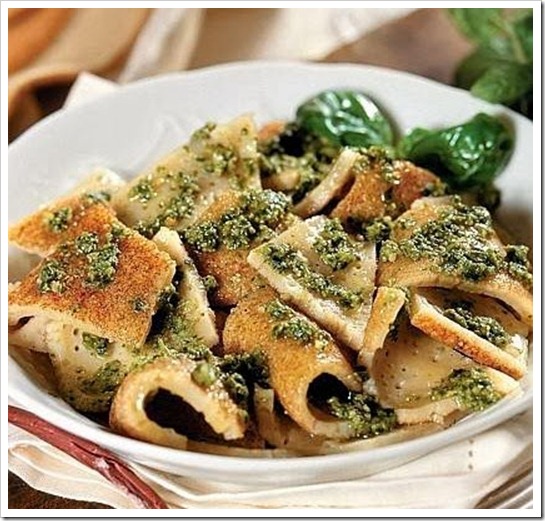 |
| Un piatto di testaroli al pesto |
Mattia is one of a handful of young people from Pontremoli who embarked on a cultural journey to rediscover gli antichi mestieri (the old trades/crafts) with the aim of making a living out of them. Working alongside old people who still had the traditional skills and knowledge he learnt, amongst other things, apicultura (bee keeping and honey making), potatura delle viti e degli ulivi (prune vines and olive trees), fare il vino e l’olio (make wine and oil), coltivare frutti di bosco per fare marmellate (cultivate forest fruits to make jam), curare i castagni (look after chestnut trees), e fare i testaroli (and to make testaroli).
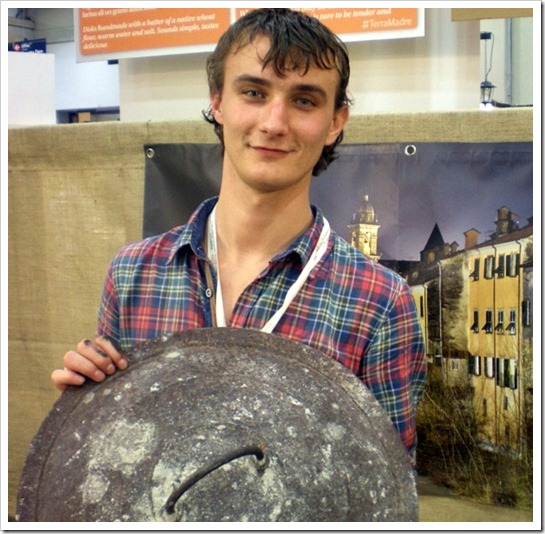 |
| Mattia holding il testo soprano |
I really enjoyed Mattia’s workshop, and it was great fun watching him skilfully reproduce this ancient recipe in the traditional way:
In a plastic bucket (the sort you would use for mopping the floor!) he mixed up some plain flour, salt and hot water to make a very runny batter, which he stirred with a big ladle especially handcrafted to his specifications. Having sieved the batter a couple of times to get rid of all the lumps, he then quickly poured it from one bucket to another several times to make the batter as runny as possible. When he was satisfied with its consistency, we all went out to the courtyard were a wood fire had been prepared.
Two long alari (firedogs) were set next to each other on the concrete floor with the fire burning between them and the two parts of the testo (the pan and the lid) sitting on the top of the firedogs to get nice and hot. Both parts, il testo sottano (the pan, literally ‘the lower testo’) and il testo soprano (the lid, literally ‘the upper testo’) were positioned with their inside surface directly in contact with the fire. In order to check that they had reached the right temperature, Mattia sprinkled some flour on the lower testo: if it has reached the right temperature the flour should produce a grey smoke within 3-5 seconds.
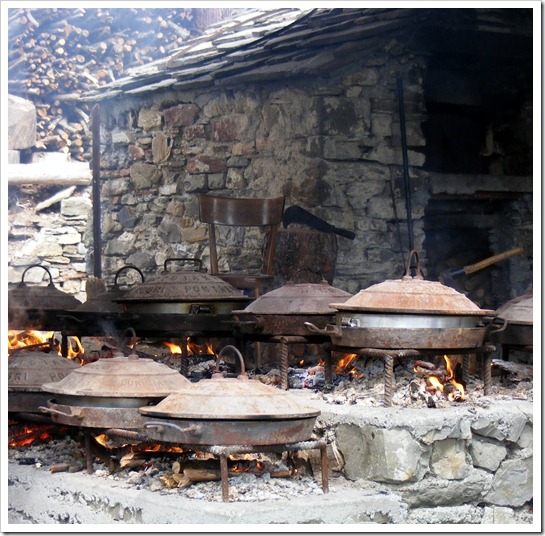 |
| … quanti testi! |
Mattia explained that the best wood for cooking i testaroli is il faggio (beech) as it produces a high temperature with large flames that engulf the whole testo, whilst at the same time adding that ‘special flavour’ to the testaroli without overwhelming them. Since ghisa (cast iron) is porous it tends to absorb the flavour of both the ingredients and the fuel used for cooking. However, a word of warning: il testarolo pontremolese and its recipe is classed as a ‘Presidio Slow Food’, which means that it’s protected by law (a bit like a DOC wine) and can only be produced here in the Pontremoli area. For this reason Mattia kept a few secrets from us. But unless you have a real testo and a stock of beech wood lying around it’s pretty unlikely that you’ll be able to make these at home anyway … so I suppose you’ll just have to come to Pontremoli to savour the genuine Testaroli Pontremolesi! You can find out more about Mattia and his business ‘Tradizioni e Sapori’ by clicking HERE
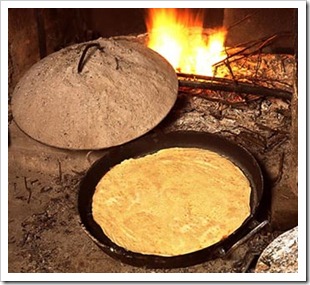 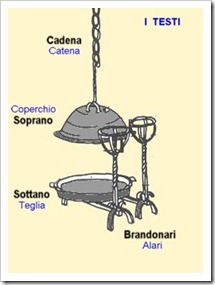 |
| a sinistra: il testarolo appena cotto e a destra: gli attrezzi |
Have you ever visited Pontremoli or eaten testaroli? Let us know in the comments section.

Build vocabulary, practice pronunciation, and more with Transparent Language Online. Available anytime, anywhere, on any device.



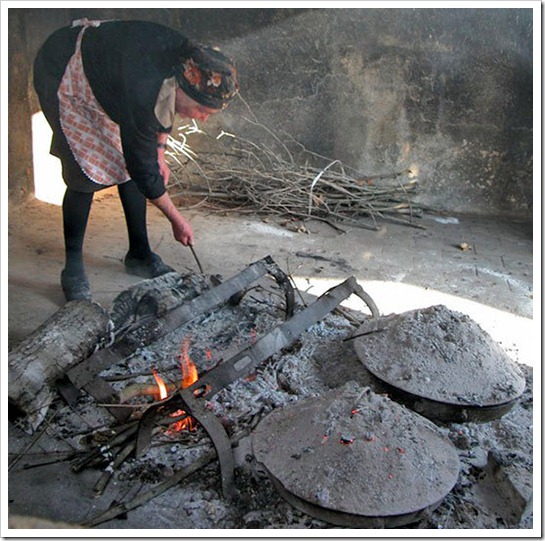

Comments:
Sophie:
Testaroli are delicious! I attempted to make some at home and it went very very wrong. Definitely need the right equipment! Looking forward to trying them again as I am visiting that area next week 😀 So wonderful to know that some people are working to preserve the knowledge and skills needed to make them.
Geoff:
@Sophie Grazie per il tuo commento Sophie … e buon appetito 🙂
A presto, Geoff e Serena
Tara:
We bought one of these in one of the villages in cinque terre (vacuum packed) and cooked it when we got to the UK. It was delicious. I am hoping to be able to find them at home in Australia somewhere but I don’t like my chances.
estrella aliaga:
hello, im so sorry to bother you…. do you know who could sell me a testo or who can make me one??? thank you….
Serena:
@estrella aliaga Salve Estrella! You must come to Pontremoli if you want to buy a testo!
Saluti da Serena